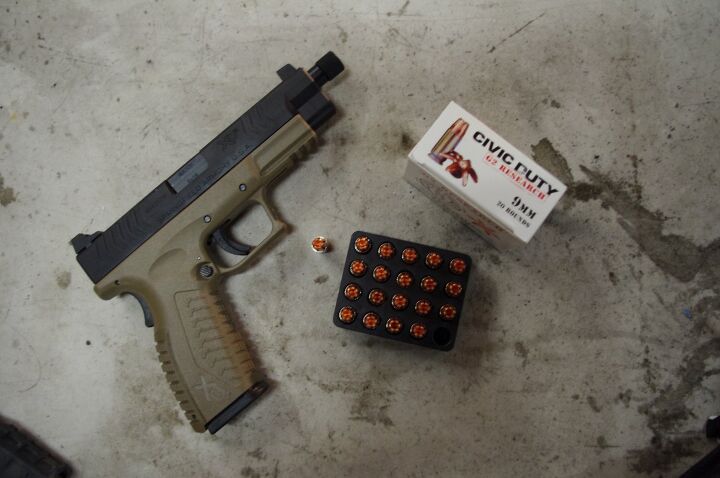Ballistic Testing of G2 Civic Duty in 9mm
Welcome to the second installment of our ballistic gel testing series. The current series is sponsored by Clark Armory who provided the testing medium and rounds.
Technical Details of G2 Civic Duty in 9mm
The G2 Research (G2R) Civic Duty Ammunition features a similar design to the G2 R.I.P. Ammunition but with a heavier bullet and it is designed to not break apart. It is also 100% copper.
Typical bonded hollow point bullets over penetrate, leading to insufficient energy transfer, damage and trauma inside the intended target. G2 Research has taken its innovative Trocar design of the solid copper R.I.P. fragmenting projectile and adapted it to the Civic Duty Expanding self defense round. The Civic Duty defeats barriers as effectively as the R.I.P. and expands 2.5 times its initial diameter after coming into contact with a fluid medium. The Extreme Expansion of the Civic Duty leads to 100% energy transfer and total weight retention inside the intended target without concern of over penetration in CQB situations.
There were not a lot of technical details on G2 Research’s website regarding the round.
- 9-10″ Penetration
- 100 gr. solid copper / lead free projectile
- 1230 FPS average (+10%)
About G2 Research:
G2 Research made big waves in the personal defense world when it released its Radically Invasive Projectile (R.I.P.) in the major pistol calibers. The R.I.P. utilized a solid copper fragmenting hollow point design to cause massive trauma in the first 12″ of penetration. More recently, G2 Research has applied their R.I.P. concept to their “Rip Out” and “Trident” rifle rounds as well as their Civic Defense pistol ammo.
G2 Research’s website: http://g2rammo.com/hand-guns/civicduty/
Test Parameters and Setup
Our evaluation format is based on testing a single round per article against the following four tests: against bare gel, gel covered with several layers of clothing, gel behind drywall and gel behind automotive glass (both of the last two will also have a layer of clothing over them).
First order of business will be testing the density of the gel with a BB fired at a known rate. We will fire this into a corner of the gel
Each round will be fired through a chronograph to test comparison to stated velocity from the manufacturer.
The test will look like this:
- Set up shooting position and recording devices
- Fire two rounds through the chronograph at the bullet trap
- Set up naked gel
- Fire BB at 500 to 600 feet per second at Gel and photograph penetration
- Fire round at gel while filming video and then photograph penetration from front, side and top.
- Repeat steps 3 to 5 with the other tests.
We chronographed three rounds and they were slightly above the stated velocity, technically outside of the stated error range of 10% (max should have been 1,353 ft/sec).

Rounds were a little faster than stated velocity. It could be because we are a mile up…
Test 1: Bare Gel
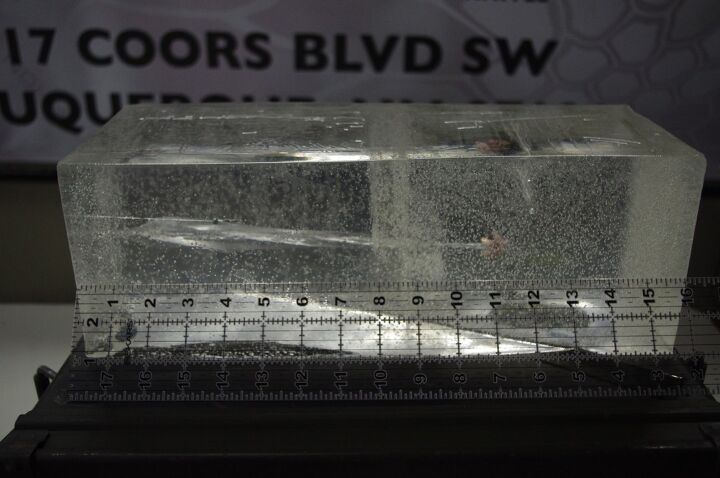
BB Penetration to about 3.75 inches
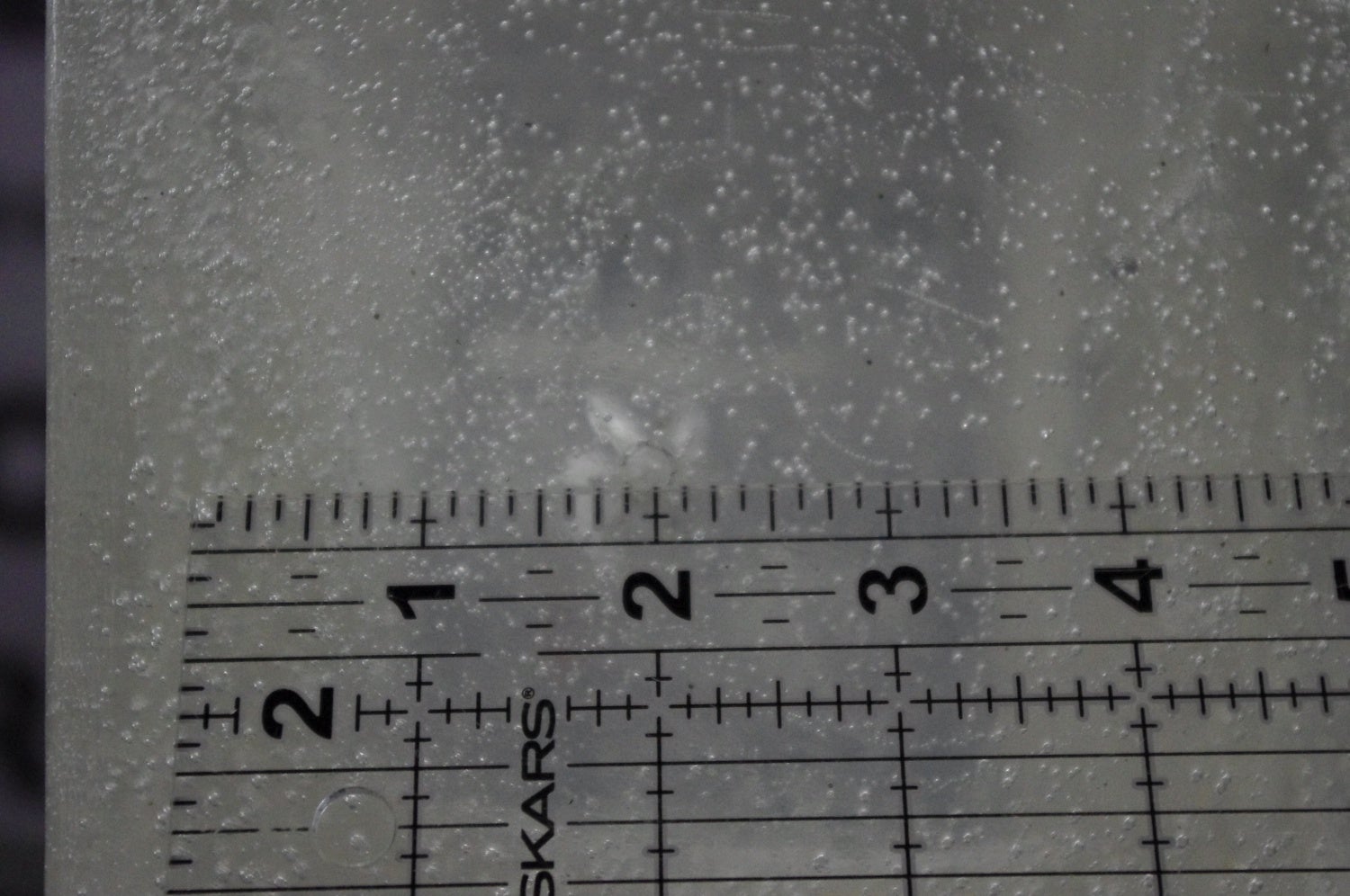
Front Shot, bare gel. Note you can see the “star” pattern forming in the gel.
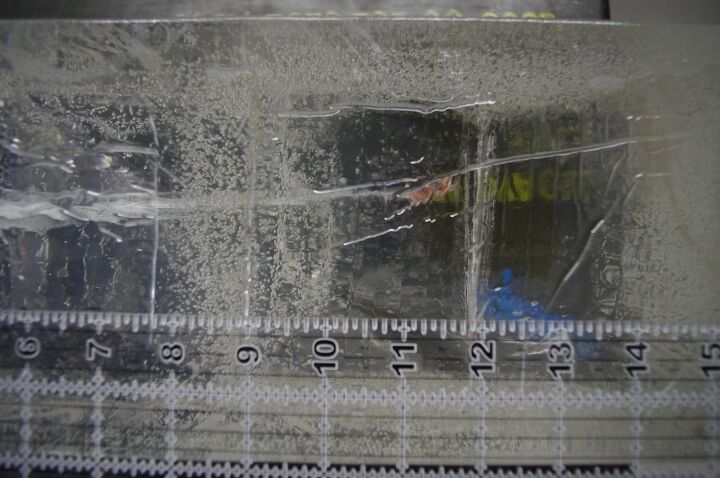
Side Shot, Bare Gel. Roughly penetrated to 11.25 inches
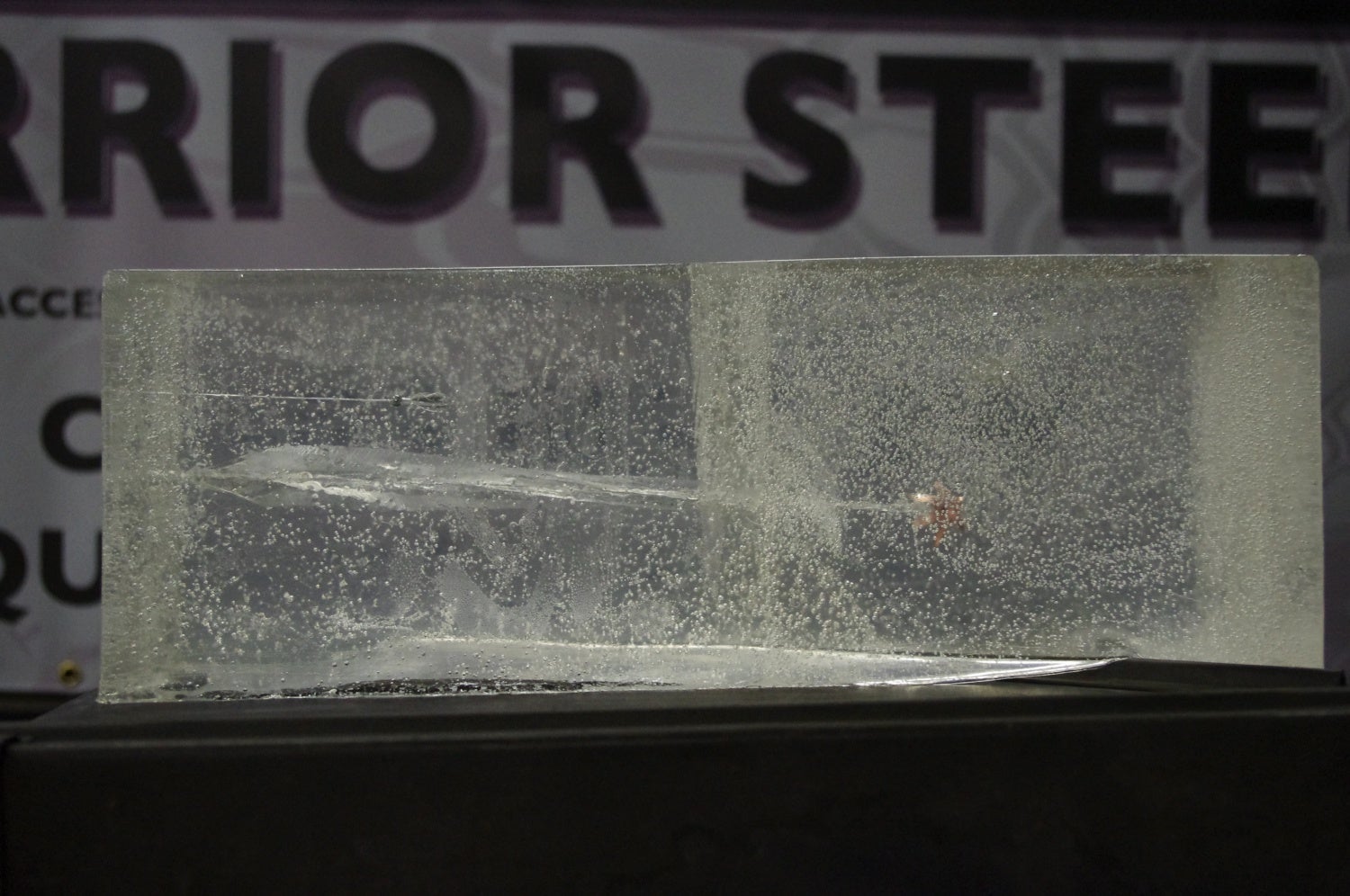
Side Shot, Bare Gel. Note the wound channel in the first few inches.
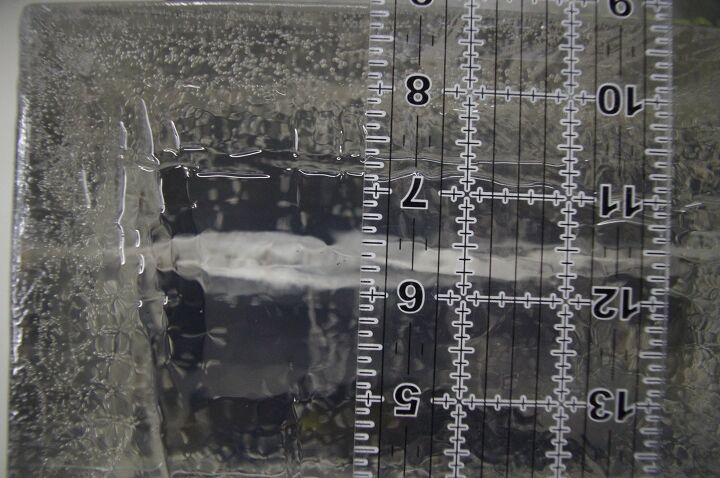
Top, Bare Gel. Wound Channel.
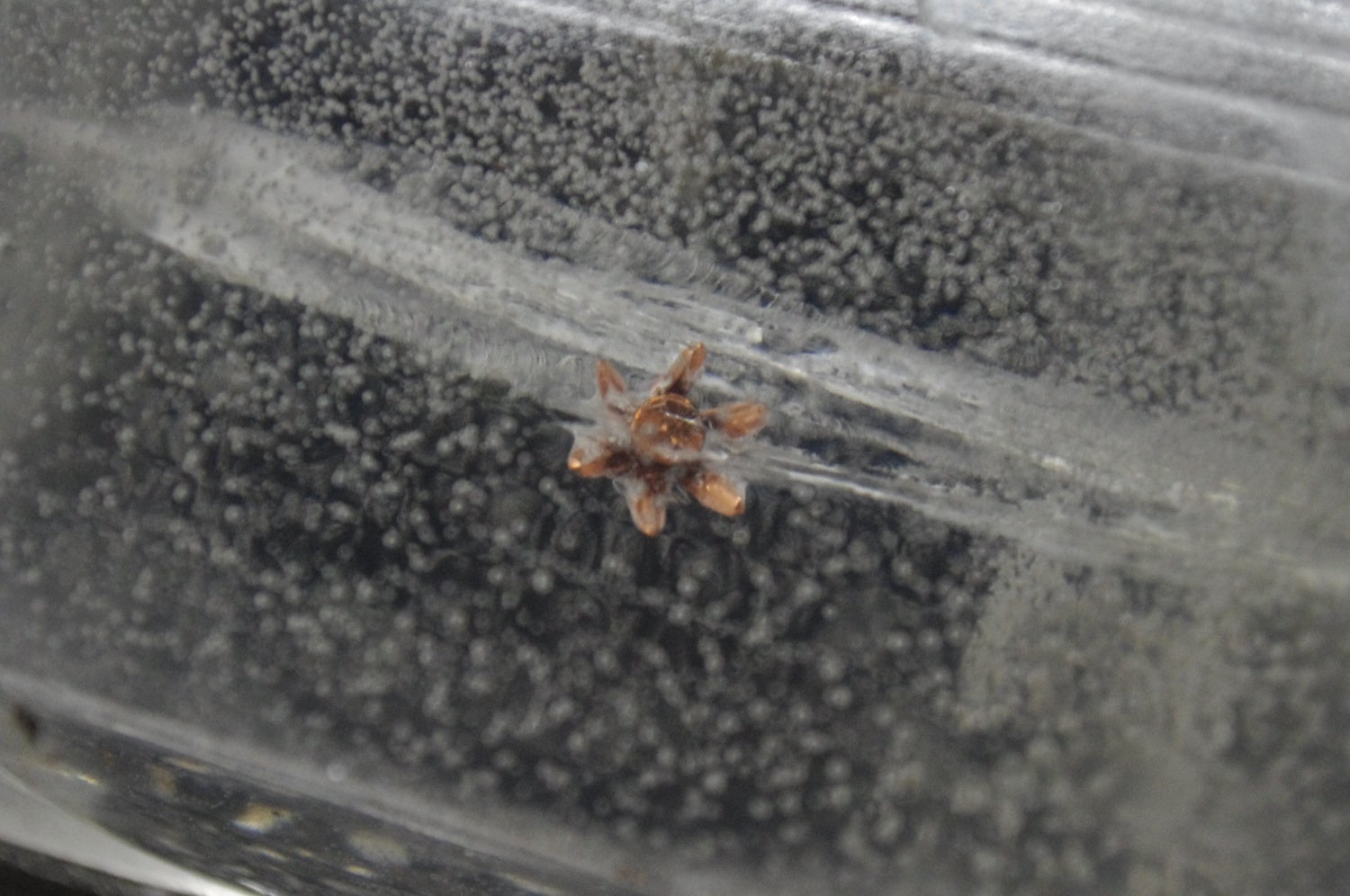
Top, Bare Gel. Note the flowering of the brass petals. (We fired a second shot and got this clearer shot of the round)
Findings
The round went a little farther than advertised. The petals fully open just after entering the gel and stayed attached to the body, causing a terrific wound channel.
The round would not technically pass the FBI standards as a significant portion of the mass did not penetrate twelve inches. However, I think we can all agree this round would cause some discomfort to a person shot with it…
Test 2: Heavy Clothing
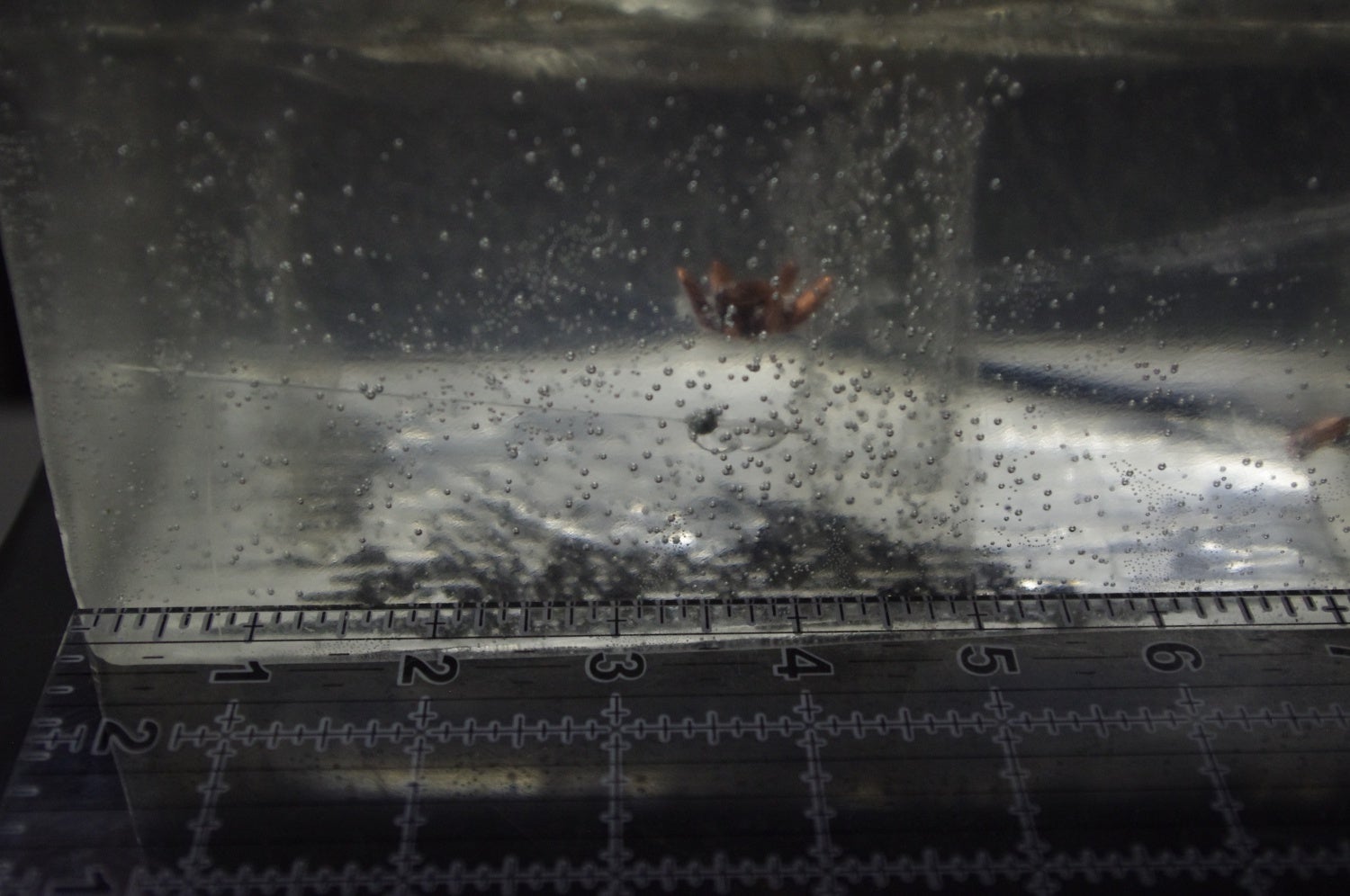
BB Test, Heavy Clothing. 3.5 inches penetration. I fired the Civic Duty from one side while Tom G simultaneously fired the BB from the other side. Basically a trust fall, TFB style. KIDDING. We forgot to take the picture of the BB before we shot the gel…
We failed to take a picture of the front of the gel. Let this be a lesson that you need to have a written script/storyboard for doing this kind of test. The front wasn’t really that exciting, anyway… 🙂
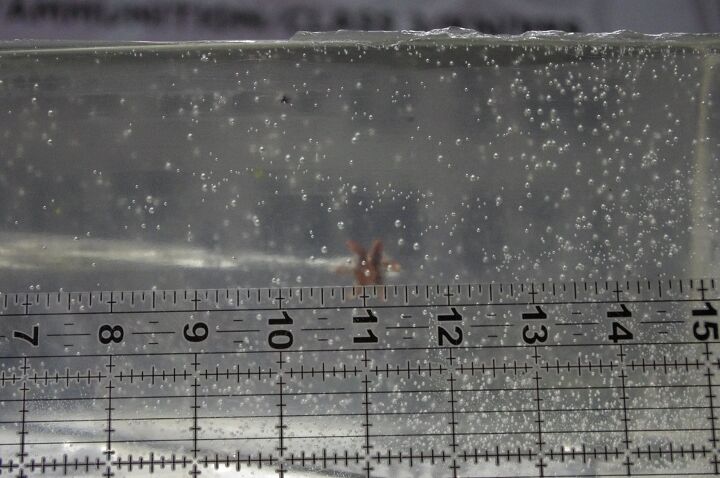
Side, Heavy Clothing. Penetration to about 11 inches.

Side, Heavy Clothing. We did a second shot suppressed. Because Walt brought the Osprey 45 into the bay, and really, how could we refuse? Funny thing was that the suppressed round went almost an inch further and one of the trochars separated.
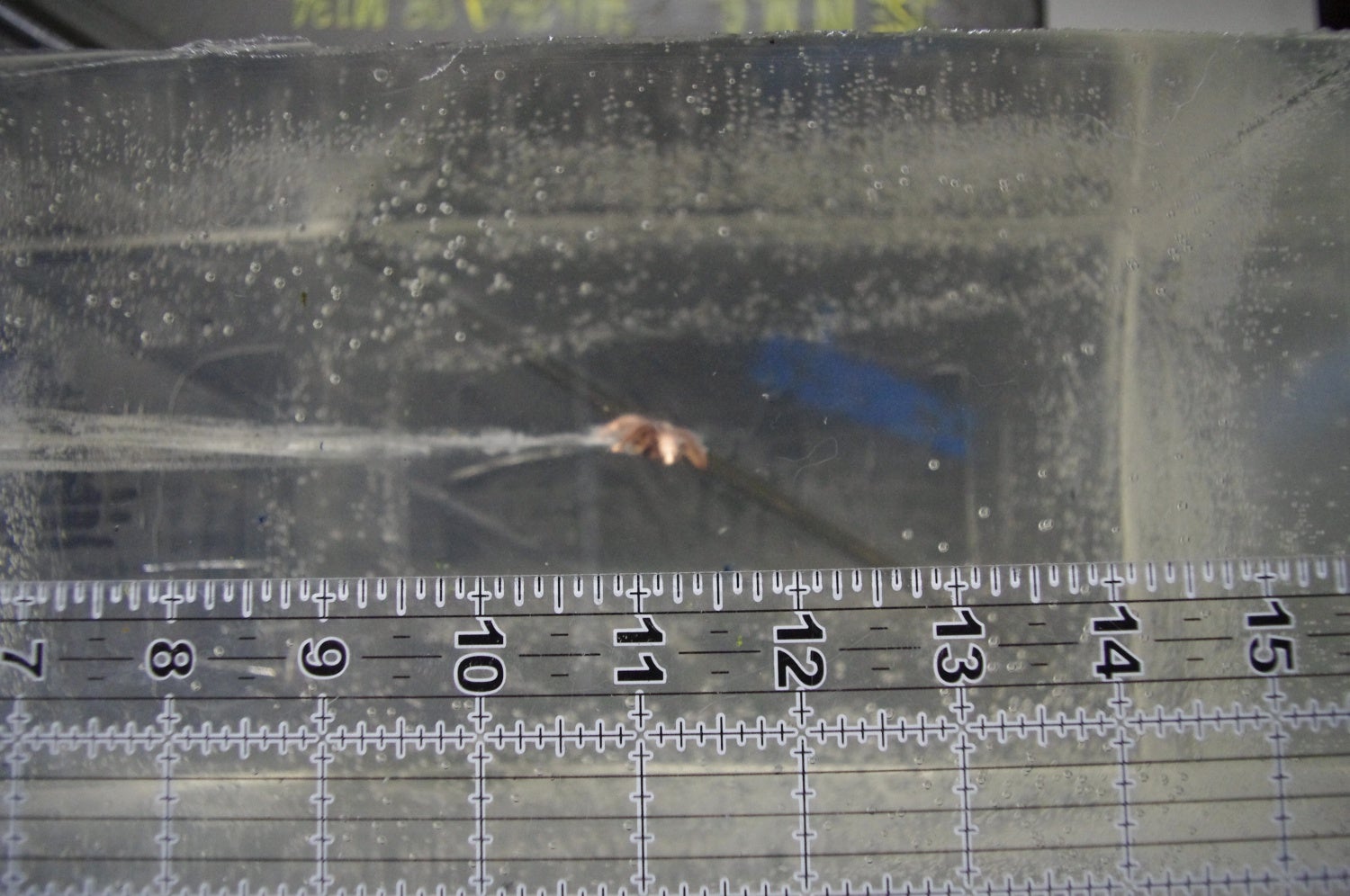
Top, Heavy Clothing.
Findings
The round again went a little farther than advertised. The petals stayed attached to the base as advertised.
Around two seconds into the video there was some weird flash from the round inside the gel. Not sure what that was from. Perhaps unicorn dust igniting?
The round would not technically pass the FBI standards as a significant portion of the mass did not penetrate twelve inches. Again, this round does a good job of staying together and causing a huge wound.
Test 3: Dry Wall
We did not get a picture with the BB test. This particular gel is starting to get pretty opaque from the introduction of dry wall material.
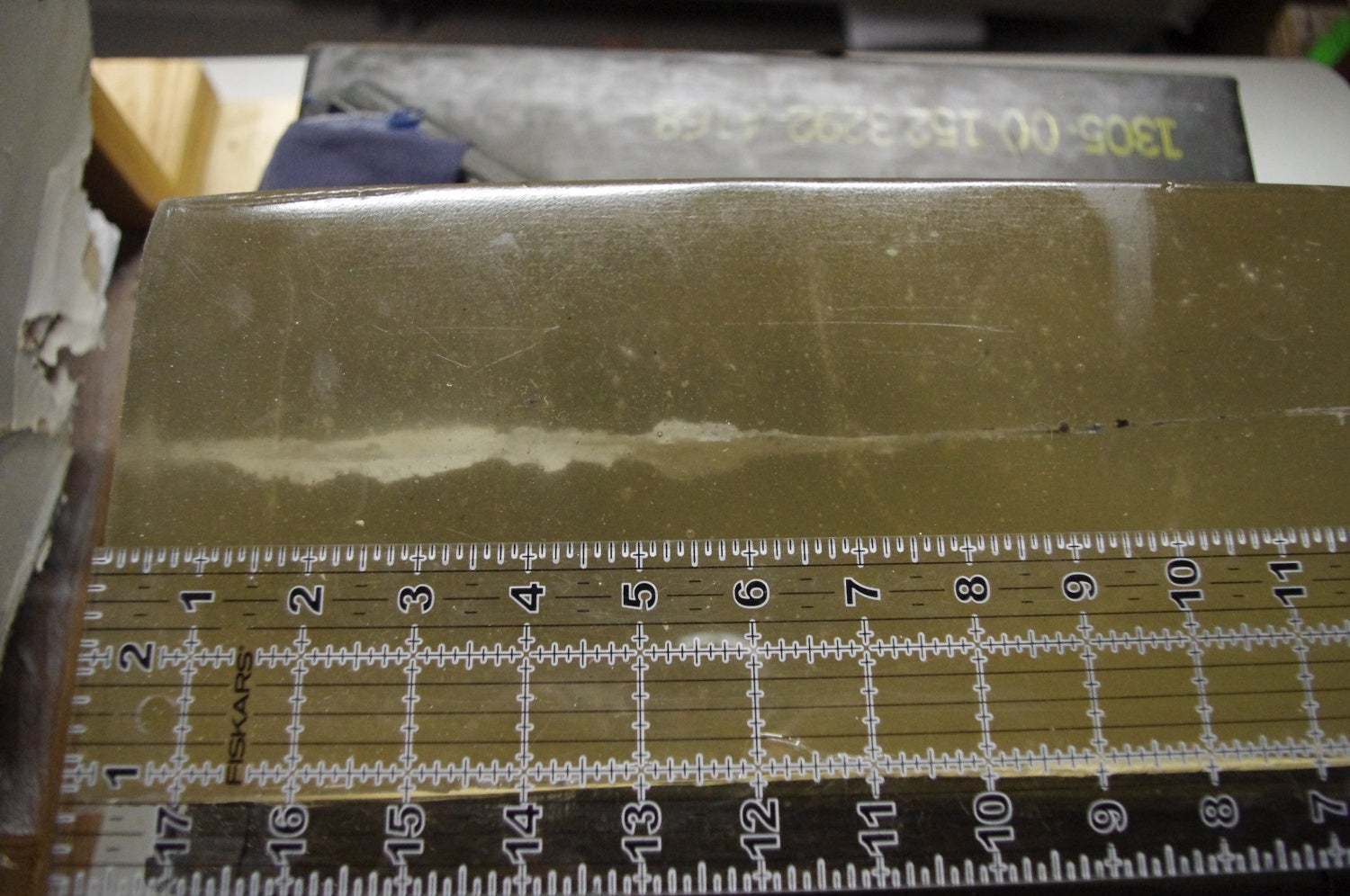
Top, Dry Wall, 1st Shot. The round deflected up and exited the top of the gel.

Side, Dry Wall, 2nd Shot. Round stayed in the gel.
Findings
We conducted this test twice as the first shot actually deflected upward nearly a full inch and a half. The second round deflected the same amount but transited the entire length of the gel. We did not recover either round from the bullet trap, but our assumption is that the rounds pack full of dry wall and behaved like a penetrator.
And again a weird flash of light from within the gel. I promise there was no HE inside the rounds.
Test 4: Automotive Glass
The automotive glass was conducted using Tom G’s scaffold from the previous tests we did. This time we were able to cut the windshield down into more manageable pieces. The glass was placed at a forty-five degree tilt, rotated forward by fifteen degrees, and set eighteen inches in front of the gel.
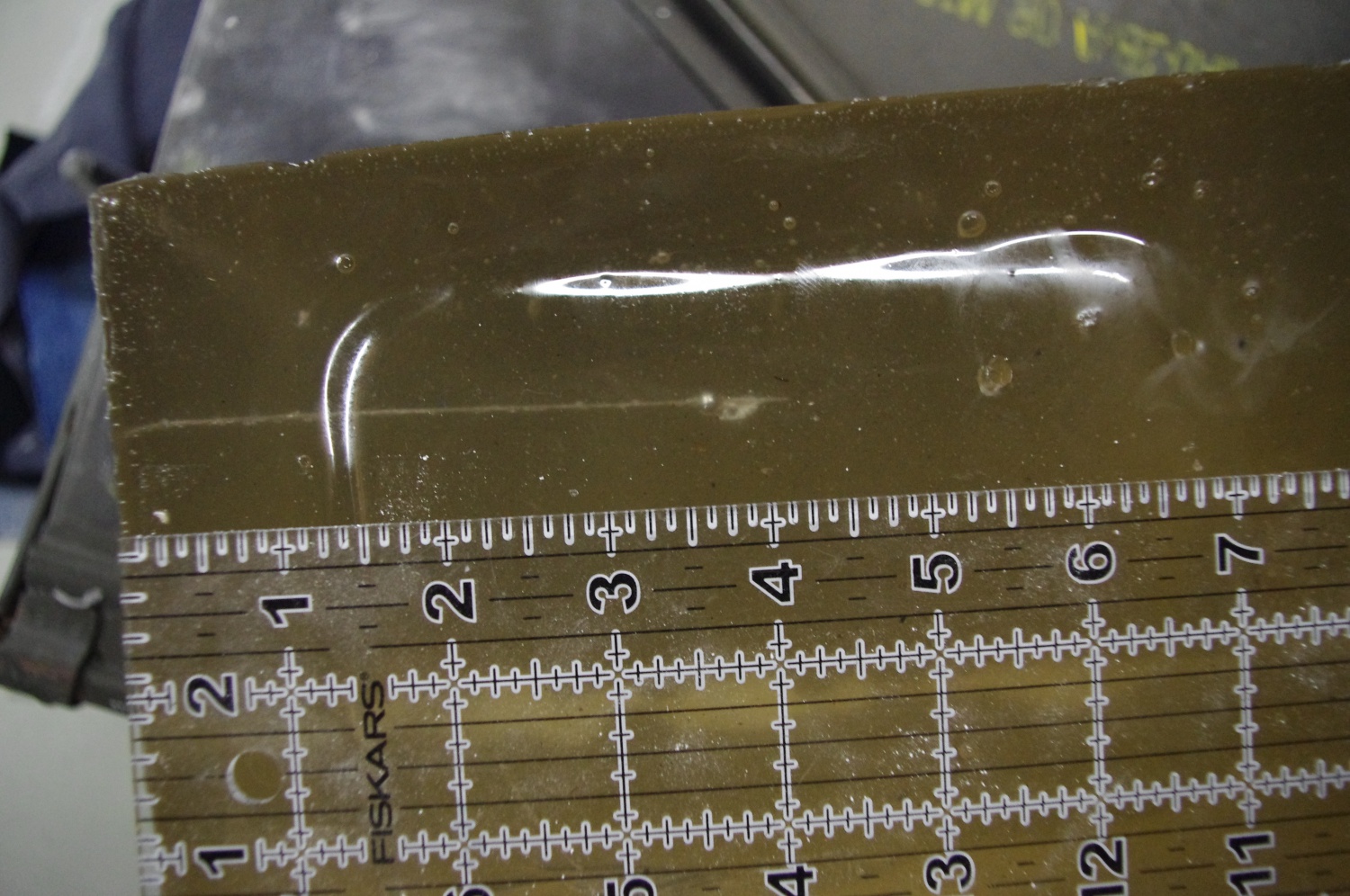
BB Test, Glass, 3 5/8 inches penetration.
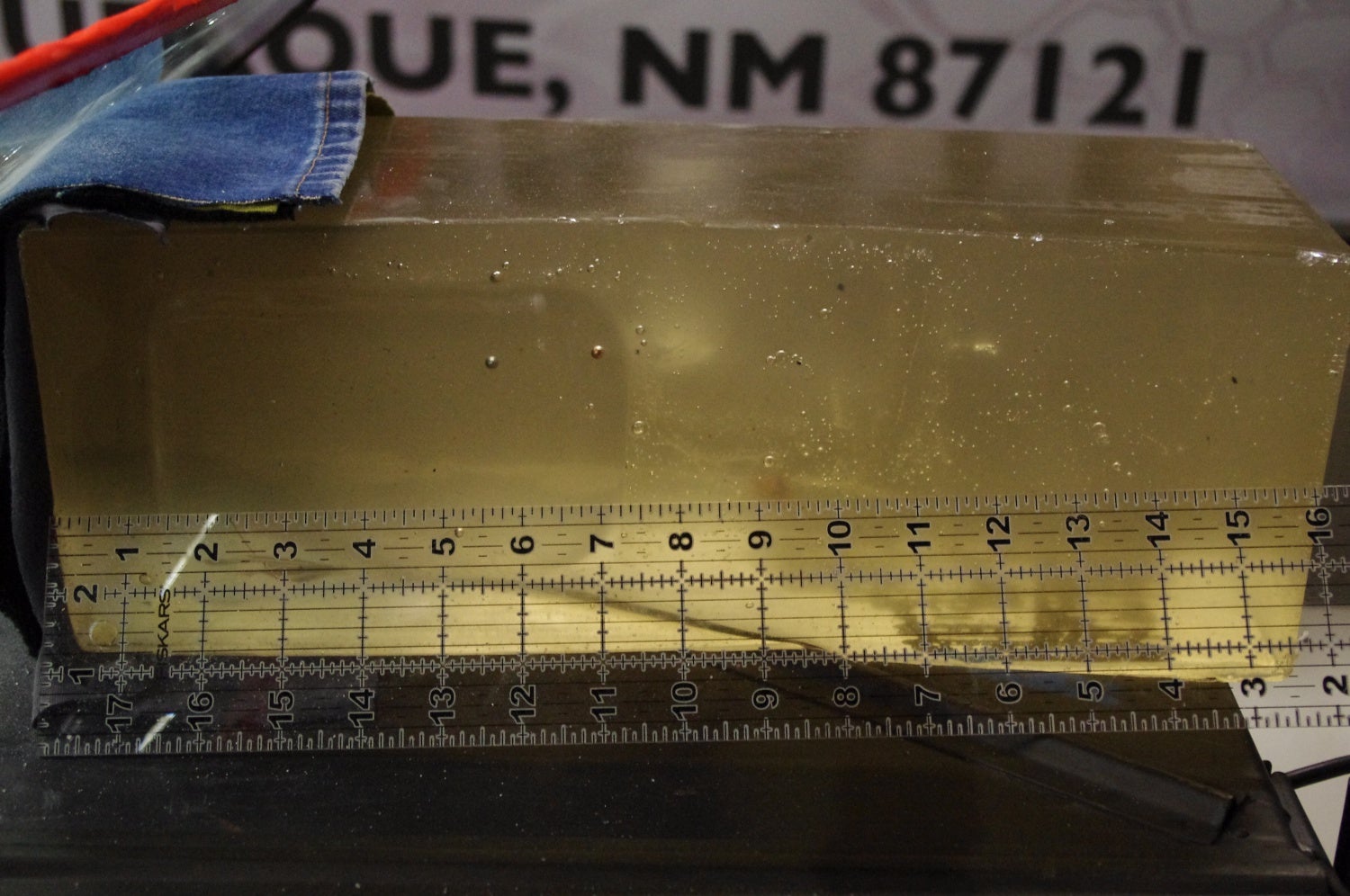
Side 1, Glass. Again the gel is really getting fogged. But you can see the round at 9.25 inches.
Findings
The round punched a huge hole in the glass, but apparently packed full of glass as it stayed together in the gel. The round did meet the advertised penetration distance, though the trochars did not open. They did, however, stay together with the base.
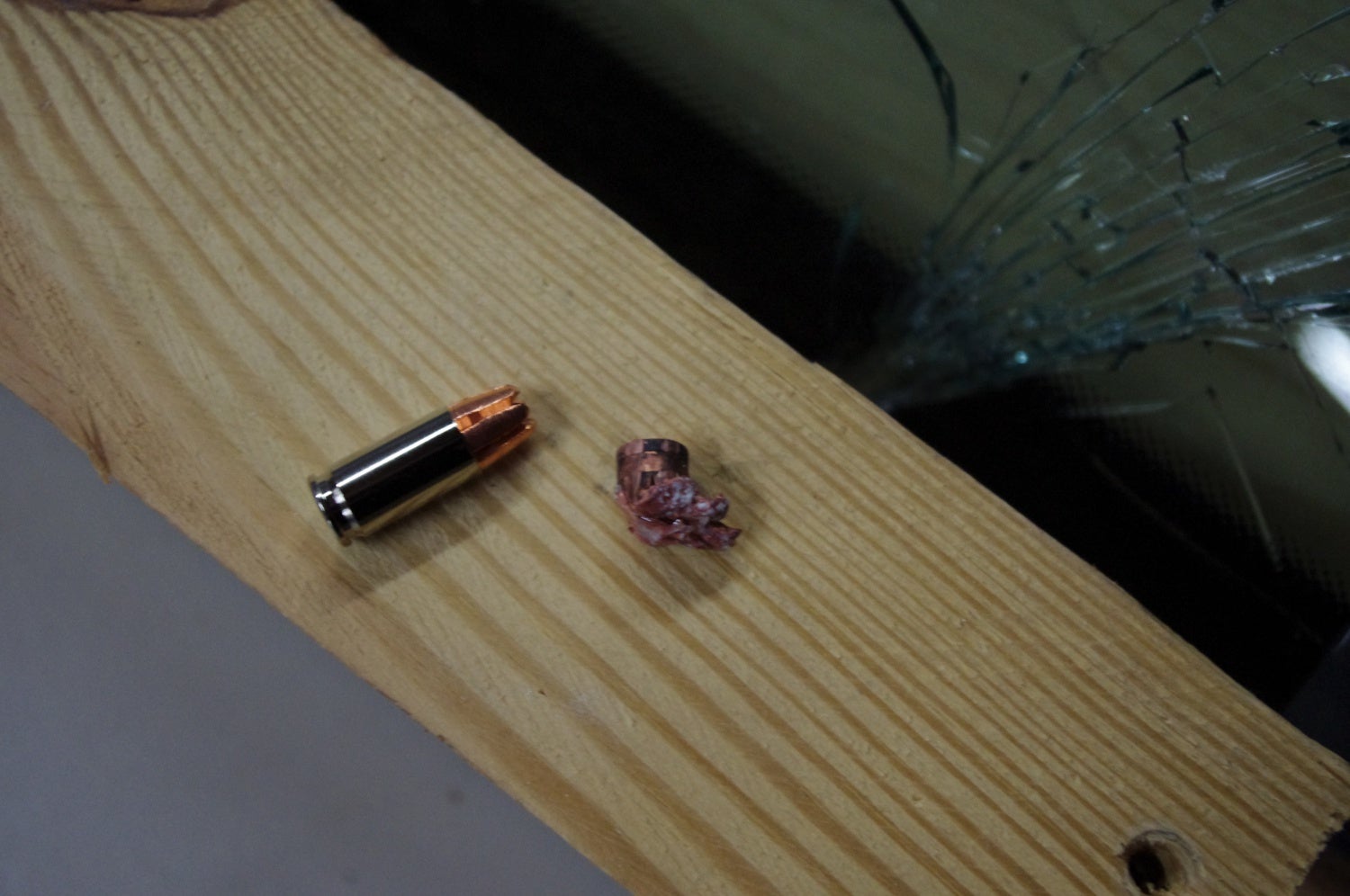
Round Deformation through glass. We dug out the mangled mess of the round from the gel.
The round would not technically pass the FBI standards as a significant portion of the mass did not penetrate twelve inches.
Conclusions
Despite not technically passing the FBI depth of twelve inches (with the exception of the dry wall test, which was an over penetration), both Tom G and I liked this round. The size of the round after the expansion of the trochars was quite impressive and the wound channel was well defined. We would both carry this round for defensive purposes.
The drywall test was interesting in that we had an upward deflection, though it was not unexpected that it behaved as a penetrator. I would venture that most rounds with a hollow cavity will pick up material and stay in their general form.
Again, we can debate the efficacy of the FBI standard (in the comments), but it is a pretty well defined and understood test at this point, and provides a good way to compare rounds.
Credits
Thanks to Clark Armory and BMC Tactical for sponsoring and supporting this test. Clark Armory provided the Ballistic Gel from ClearBallistics and the G2 Civic Duty 9mm.
BMC Tactical provided an indoor lane with consistent lighting and temperature to run the test (and an Osprey 45).
We appreciate these two companies providing necessary materials and infrastructure for the tests.
 Your Privacy Choices
Your Privacy Choices
